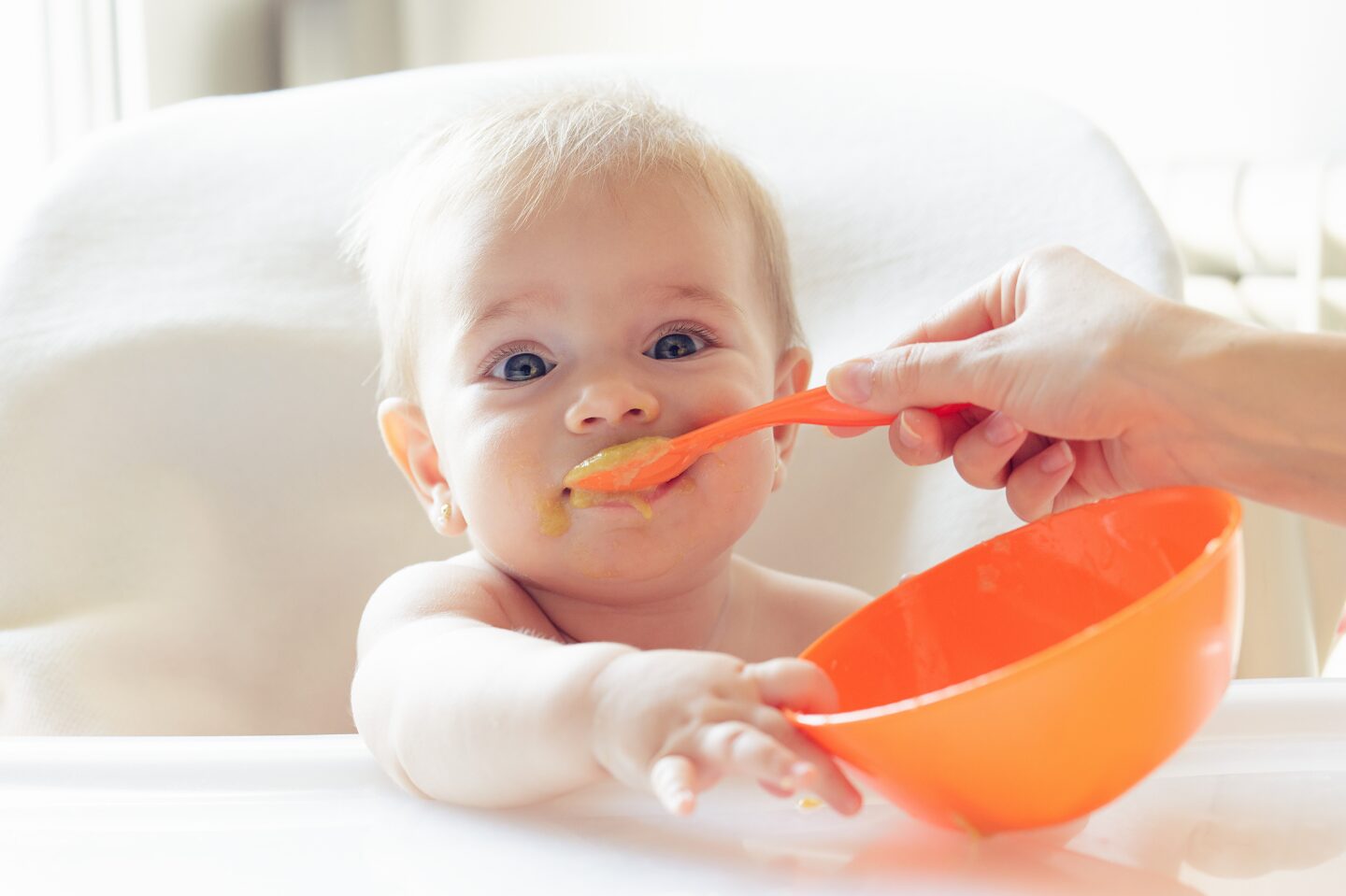Uz pocas prechadzania programu sme vymenili netecuci uciaci hrncek za flasticku so slamkou (brckem) a babatko sa takmer hned naucilo sat. Program pre mna obsahuje cenne informacie na jednom mieste, ktore by som inak skladala aj niekolko mesiacov, co nie je pri detoch realne. Paci sa mi, ze na programe spolupracuju odbornici z roznych oborov a informacie su podlozene aj odborne. Dakujem, za usetreny cas dohladavanim informacii a hlavne sa lahsie vyvarujem stereotypnym dnes uz “chybam”! Za mna odporucam!
Getting started with toddler eating
As your child grows, so do their dietary needs. This program offers comprehensive information on the nutrition of children from 1 to 3 years old. Provide a balanced menu that will suit both your child and the whole family.
249 CZK
The program We start feeding toddlers provides important information about weaning, the issue of night feeding and how to manage the picky eater stage, which is a natural part of children’s development. We will introduce you to practical strategies to ensure that your child receives a balanced diet rich in the essential nutrients he needs during these years.
Learn which foods to avoid and why, including the risks of salt, sugar and sweeteners, and get expert advice on the role of supplements such as fish oil, iron and vitamin D. We develop eating skills, from mastering the use of cutlery to transitioning for a regular family meal. Through practical advice and supportive strategies, we will help you create a positive relationship with food in your child, laying the foundations for healthy eating habits that will last a lifetime.
The program has 14 chapters and 33 subchapters, and you buy access with regular updates for 12 months.

What will you learn in the program?
- Weaning: guidelines for weaning your baby and introducing a balanced solid diet tailored to your toddler’s nutritional needs.
- What a toddler’s diet should look like: a look at determining appropriate portion sizes, ensuring that each meal contains enough nutrients to support baby’s growth and development.
- Involvement in family meals: strategies for a smooth transition of the toddler to regular family meals and independent eating.
- Coping with picky eating: techniques for managing the picky eater phase, preventing fear of new food and encouraging openness to trying new foods and tastes.
- Creating a healthy relationship with food: tips on how to establish positive eating habits from an early age and how to deal with inappropriate behavior at the table such as crying or running away.
- And other interesting information!
What does the program look like?
On your mobile and on your computer, always at your fingertips
To start the program, you create your account, which contains all your purchased programs and packages. You’ll simply be able to track your progress in a program that saves automatically, and everything will work easily on your computer and phone.
Want to try the program first? For each of the programs you have the opportunity to review a section for free.
Program content
The role of milk in a toddler's diet
- Mother’s milk
- Artificial milk
- Night feeding and breastfeeding
Principles of healthy nutrition for toddlers
How important it is for a toddler to establish a regular meal schedule and what the consequences of frequent snacking between meals can be. Tips for maintaining time intervals between meals and the importance of dining together.
Balanced menu
- The need for energy and basic nutrients
- Varied diet and its importance from the point of view of micronutrients
Determining appropriate portion sizes
What does an approximate portion look like for a toddler in individual food groups.
Food supplements in the diet of toddlers
- Classification of dietary supplements
- Frequently used dietary supplements
Overcoming barriers when switching to a family diet
- Adaptation of family recipes for young children
- What foods to limit
- What foods to avoid completely
Selection and inclusion of foods in the toddler's diet
- Food selection based on product composition
- What to focus on when choosing food
- Selection of suitable fluids
- Selection of cereals and other side dishes
- Selection of fruits and vegetables
- Selection of milk and milk products
- Choosing the main sources of protein: meat, fish and eggs
- Selection of legumes (beans, lentils, chickpeas, soy)
- A selection of nuts, fats and oils
- Selection of semi-finished products and ready meals (for example, baby food in a jar)
Involving toddlers in family meals
- Problems in fed babies
- Refusal of food
- Refusal to sit at meals
- Involvement of the child
Pickiness in food
In the chapter, you will learn that picky eating is a normal developmental stage that occurs around the first and third year of a child’s life, and that it is important to distinguish between a normal picky eater and more extreme forms of food refusal that may require professional intervention.
Food Neophobia
The chapter explains the difference between food neophobia and food pickiness.
Prevention of pickiness in food and expansion of the food repertoire
Tips on how to manage pickiness in children.
Development of self-catering
- Development of motor skills
- Building self-confidence
- The course of learning to eat independently
How to establish a healthy relationship with food
In the chapter, parents will learn that developing a positive relationship with healthy eating starts with them, including eating a balanced diet, dining together without distractions, involving children in meal preparation, and avoiding forcing food or using food as a reward or punishment.
Frequently asked questions by parents
Question and Answer Section. Based on your questions, we are gradually expanding this section in cooperation with our experts.
What do parents say about the programs?
Get started today!
Sign up for the online program, it's quick and easy.
- 14 chapters
- 33 subsections
- You will learn to create a balanced diet for your child
- How to wean a baby from milk
- A solution to picky eating
- How to include a child in the family diet
- Remove the tablets and TV from the table
Price:
249 CZK
174 CZK
See one chapter for FREE
After logging in, you can view subsection 6.2, Adapting family recipes for young children, for FREE! You can then purchase the entire program at any time.
Do you have any questions about this program?
Questions and AnswersI don’t know what Program is right for me.
Contact us by e-mail and we will be happy to help you choose the right Program or package.
How are the programmes conducted?
You browse the online programs yourself according to your time options online. In the programs, you will find a lot of interesting and important information and instructions, as well as accompanying photos, which you will especially appreciate when choosing tools, as well as videos that will present essential information and procedures even better.
How old are the programmes suitable for?
Online programs of The Eating School are currently suitable for children from birth to three years. We will add other age categories gradually. Our goal is to cover information for all ages of children.
What if I don’t find the answers to my questions in the Program?
If you do not find the answer to your question in the Program, you have the opportunity to ask our experts directly through the Q&A section at the end of each program.
How long after purchase will I have access to the Program?
You don’t have to worry about not having enough time to complete the Program. You have access to it for the whole year and you can save or print the accompanying documents and information cards.
















